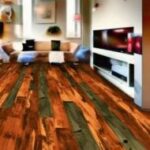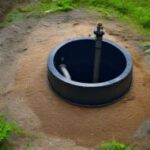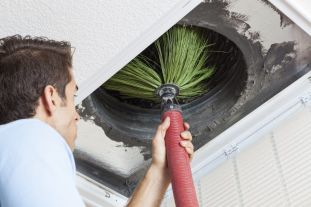-
Recent Posts
-

How to Refinish Your Wood Floors and Give Your Home a New Look
April 03, 2023 By admin -

Why Septic Tank Riser Is A Worthy Idea For Your Septic System?
March 21, 2023 By admin -

The Top Ten Benefits of Hiring a Furniture Removal Service
March 02, 2023 By admin -

Benefits of Switching from Natural Grass to Fake Grass
February 25, 2023 By admin
-
How Often Should HVAC Vents Be Cleaned – Everything you Need to Know

When dirt and debris become trapped in HVAC vents and ducts this causes two problems – it creates resistance to airflow and diminishes air quality. The best defense against these is to have the ducts and vents cleaned. The National Air Duct Cleaners Association recommends that HVAC vent cleaning be done every 3-5 years. This is a generalized guideline. Surely, an industrial space would have differing demands for air quality than an office or private home. How often to clean ultimately depends on the level of air quality you are shooting for, and the kind of activity happening in the space.
Why worry about air quality?
Air quality is measured by a filter’s MERV (Minimum Efficiency Reporting Value) rating. The MERV rating tells you how effective the filter is at catching fine, airborne particulate. So, the filters are designed to catch all this stuff in the air, but when they do not, what remains gets deposited into the vents and ducts. As this builds up over time, it can impede airflow and cause problems. Because the furnace filters play such a big role in mitigating dust and debris, the type of filters installed and the rate at which they are replaced, will be a key factor in determining when HVAC vent cleaning will be needed.
Suppose we have a homeowner who has a basic MERV 4 furnace filter, and he replaces the filter every 18 months, as the filter manufacturer recommends. This individual could likely get away with HVAC vent cleaning every 5 years. The reasoning behind this is that the homeowner is using the right furnace filter for its intended duration, so it is unlikely that there would be a need for extra cleaning. Now let’s suppose that the homeowner’s mother who has bad asthma moves into the home. In this case, the homeowner may decide to be aggressive and jump up to a MERV 8 rated filter. Even if the homeowner continues to replace the new filters diligently, he should start having the vents and ducts cleaned more frequently. Because the higher rated filter is less porous, it will cause a greater resistance to airflow. The elevated resistance now means that the air is traveling through the vents and ducts at a reduced rate, so the vents will be at a higher risk for dust and dirt deposits collecting in them.
It is important to remember that the filters are typically placed inside the vents, kind of like a lining between where the ducts and vents meet. In our scenario, the need for more frequent cleaning is because there is a bottleneck effect. As the air is approaching the end of the duct, it begins to slow when it gets near the filter. If this slowing of air is not too much, then there will not be many deposits of dust and debris around the filter. However, if the air slows too quickly, then there is likely to be more deposits near the filter, which will mean more HVAC vent cleaning.
This does not mean that the higher the MERV rating, the more cleaning will be needed. If the homeowner decided to get a whole new HVAC system for the house when his mother moved in, he could get a furnace and air conditioner that are calibrated to handle a MERV 8 filter. Because the whole system would be pushing air through at a rate that is optimal for that rating, there would be no bottleneck effect and he could go back to cleaning every 5 years. As long as the filters you are using pair nicely with the specs of your system, HVAC vent cleaning should not be needed too often.
The wild card
There is another variable at play with all of this. Sometimes when certain things are present, the bottleneck effect is always worsened. One example would be the presence of a dog or cat. Regardless of how well your filter furnace pairings are, the minute a fur bearing animal is brought indoors, you will need more HVAC vent cleaning. The same is true for indoor smoking. If nothing else, getting rid of these two things will reduce your need for vent cleaning.
